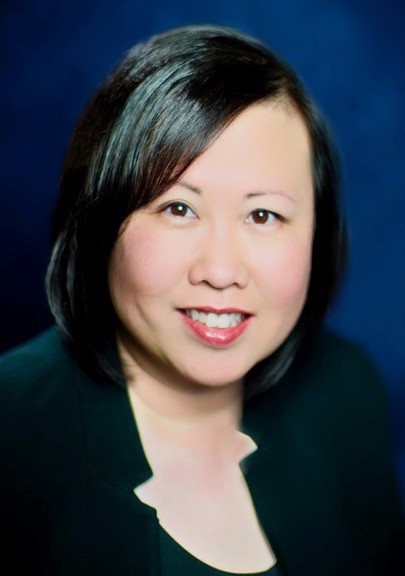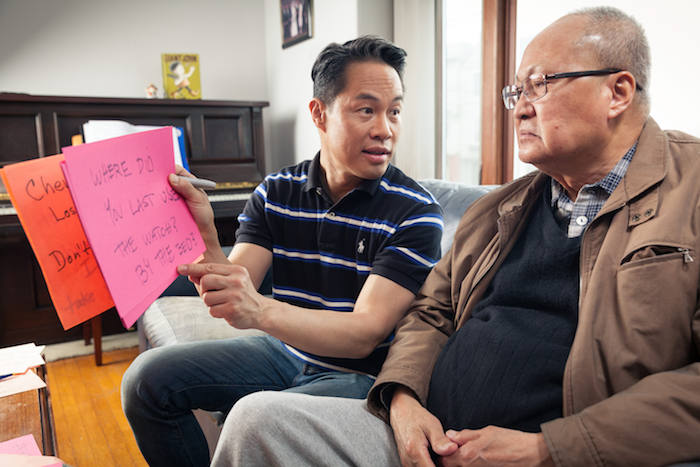
Jeff Yang has been a columnist for the Wall Street Journal, was founder and publisher of the groundbreaking Asian American publication A. Magazine, and contributes to CNN Opinion and Inkstone, the digital magazine of the South China Morning Post.
Follow him on Twitter @originalspin or read his work on CNN or Inkstone.
How has being Asian American affected your work as a journalist?
I’m in a somewhat unique situation because unlike many of our colleagues, I feel like it was my identity as an Asian American that led me into my work as a journalist. In college — inspired by the example of Jeannie Park, who was a few years ahead of me — I’d been an active member of campus Asian organizations, and relaunched a dormant Asian American publication there. That experience led me to question why there wasn’t an Asian American periodical in the “real world,” addressing our issues, exploring our evolving culture and highlighting our emerging talent. I recruited some of my collaborators on that campus project and launched what would become A. Magazine: Inside Asian America, which I oversaw as Editor and then Publisher for almost a dozen years. I should note that many people from AAJA who supported and contributed to A. Magazine back in that era, and we couldn’t have launched or survived as long as we did without it.
How do you think your identity has affected how you approach certain stories?
While I was running A. Magazine, and simultaneously contributing to other “mainstream” publications, eventually becoming TV critic and then a columnist for the Village Voice, the San Francisco Chronicle, the Wall Street Journal and now CNN and Inkstone — the online periodical of the South China Morning Post — I became conscious of how many stories were simply overlooked because they originated in our community.
Our lack of representation in mainstream media coverage wasn’t generally purposeful on the part of editors. More often than not, they just didn’t see what we saw, hear what we heard or live the same experiences we did. And when I pitched stories that they’d missed, they were usually interested and enthusiastic, like the feature piece I wrote about attending a once-in-a-decade family reunion of hundreds of my far-flung extended relatives; or the pitch I made to write a story intimately exploring the journey of an unknown Chinese immigrant whose sea-damaged, faceless body had washed up on shore a month after the horrific wreck of the Golden Venture — a cargo ship containing hundreds of undocumented immigrants; or my request to interview Brandon Lee, the son of Bruce Lee, on the set of what would become his final film, The Crow. I had to defend the cost it would take to get me out to North Carolina for a story about the unheralded star of a B-movie horror-action film being made from a cult-favorite comic book, by explaining the relevance of Bruce to our community and my generation, and the unique tensions Brandon experienced in trying to carve out his own identity against that legacy — and how the themes of the movie made these tropes oddly resonant. I ended up being the last journalist to speak to Brandon before his tragic on-set death; the resulting story was what led to my getting named a columnist for the Voice, transforming my career, while confirming my desire to focus my writing on the culture, identity and community from which I’d come — a unique beat in the late ’90s and early ’00s, when there were very few Asian American columnists, and just a handful whose remit was to comment on and cover race and ethnicity.
How has being Asian American affected how people react to your stories?
I’ve written about this multiple times before, but the incident that led me to step away from television criticism — from being a reviewer, period — is ironically related to this question.
My first major featured TV review for the Voice after I was named columnist was of a new sitcom called All American Girl, inspired by the life of Korean American comedian Margaret Cho. When I was asked to write that piece, I told my editor that I felt uncomfortable: I knew Margaret, admired her, considered her a friend; she had even made the announcement that she was doing the show from onstage at a charity event that I’d helped to organize, and invited her to perform in. I also knew how significant this moment was for Asian Americans, to see a story like this come to life on tens of millions of screens across America. My editor said to me that my job was to write about TV, and I had to decide between doing my job and being friends with celebrities.
Galvanized by that critique, I wrote a review — and it was honest, candid and scathing. The show was inspired by Margaret’s life, but while her comedy was raw and raunchy, this was softened and pre-chewed for mass white audiences. The talented cast was mostly walking through typical sitcom material, and when there were jokes that were tied to being Asian American, they were usually at the expense of Asians for the entertainment of white viewers.
There was even a character who was a young girl from next door, whose sole role was to come into the house to ask questions about the exotic ways of her Asian neighbors.
I didn’t pull punches in my assessment. And the morning after the review published, Margaret called me and told me furiously that if the show — already reeling from early negative reviews — was canceled, I would be to blame, because as essentially the sole Asian American with a regular weekly TV beat at the time, my take would be seen as the “voice of the community,” and the network would declare that not even Asians wanted the series on the air.
(Margaret ended up making the experience a pivotal one in her one-woman “comeback show,” years after All American Girl was canceled — and she invited me to the show, and we met afterwards and ultimately made our peace.)
Not everyone would take the claim that Margaret made seriously. I did. Because the very lack of voices from a community doesn’t just mean that our stories are often overlooked. It means that when they aren’t, those few voices are disproportionately influential, very big fish in a very small pond.
Knowing that, I resolved that I no longer wanted to be the person calling balls and strikes on culture — that I was more interested in exploring Asian America’s rise and creative growth than in filtering the stream for those who might never give our creators another chance.
It’s deeply ironic, maybe karmic, that the next time there was an Asian American family sitcom on network TV, it would be a show called Fresh Off the Boat starring my own elder son, Hudson Yang.
And two whole decades had to pass for that to happen.
Who are other AAPI journalists who inspire you?
Honestly, I’m inspired by all AAPI journalists, because I know how challenging it is for us to do this, and what a devastatingly hard road it can be to both convince one’s parents and family that this is a worthy profession, and convince one’s gatekeepers and peers that you’re worthy of it.
But there are some people whose example and mentorship have made my career possible, and who I still see as guiding lights: Jeannie Park, as I mentioned, who founded AAJA’s New York Chapter and still serves as a role model of action and purpose for me even today. Helen Zia, who was president of the New York chapter when I first graduated, and who began as a leader during one of the most important moments of Asian American history, the Vincent Chin trial, and has since become one of the most important chroniclers of the Asian American experience. And my friend, proxy elder brother and editor once I became a columnist at the Voice, Andy Hsiao, the first Asian American editor I had the great good fortune to work with, and the person who most helped to shape my writer’s voice and career ambitions.
When I look around myself today, I also am inspired by the handful of Asian Americans who were culture writers back in the early ’90s — Jeff Chang, Oliver Wang, Hua Hsu, Jeff Mao, Mike Hale, Rodney Ho and Neal Justin, among others — and by the dozens who have risen up since, like Jen Yamato, Justin Chang, E. Alex Jung, Shirley Li, Inkoo Kang, Rebecca Sun, Rebecca Ford, Emily Yoshida, Sonya Saraiya, Angie Han, and on and on. And perhaps most of all, I’m inspired by Frank Shyong, who has carved out a beat for himself at the Los Angeles Times that most resembles what I would imagine wanting to do, if I were still a full-time newspaper columnist today: Intimately tracing the outlines of the still-invisible Asian immigrant community, and looking at its influences on and intersections with the world around it.
It’s a different world out there today, and these are the people who are continuing to transform it.
Artwork by Nicole Vas, a designer at The Hill newspaper.
AAJA’s Asian American Originals campaign is sponsored by our partners at Panda Express, which has launched its own campaign highlighting Asian Americans and Pacific Islanders making their mark.




Published by